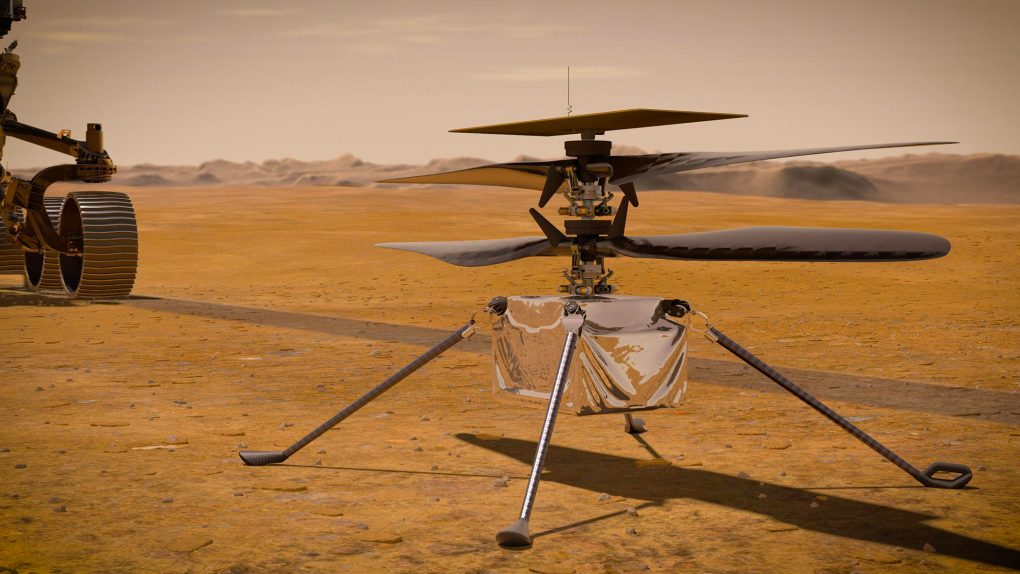It’s now been well over a month since NASA’s Perseverance rover arrived on Mars. Along with it, the Mars Ingenuity helicopter landed safe and sound on the Red Planet, and a significant portion of the rover’s first weeks was dedicated to delivering the helicopter to its test flight location. The helicopter was deployed and has since survived several chilly Martian nights, but it has yet to take flight.
At present, the helicopter is scheduled to begin its flight test on April 11th, which is this coming Sunday. If that schedule holds, we won’t have to wait long before we get to see the first images of the first-ever powered flight on another planet. It’s an exciting time for NASA and for science fans alike, but unfortunately, we won’t actually get to watch the flight happen in real-time. Instead, we’ll have to wait until at least Monday, when NASA plans to hold a press conference to go over the data related to the flight and hopefully show off an image or two.
NASA is targeting no earlier than Sunday, April 11, for Ingenuity Mars Helicopter’s first attempt at powered, controlled flight on another planet. To mark a month of Ingenuity flights, the agency will host several events to bring people along for the ride.
A livestream confirming Ingenuity’s first flight is targeted to begin around 3:30 a.m. EDT Monday, April 12, on NASA Television, the NASA app, and the agency’s website, and will livestream on multiple agency social media platforms, including the JPL YouTube and Facebook channels.
Preparing for the first attempt at making a manmade aircraft fly on another planet takes some time. All of the calculations have long since been made, and NASA’s Ingenuity team should be pretty confident that the tiny helicopter is going to take off and land with relative ease, but there are external factors that can affect how things pan out.
Mars is known for its dust storms, and while the planet is pretty clear at the moment, wind across the surface is extremely common and in some cases very intense. NASA’s trio of Mars weather stations can provide information that may help the space agency decide the best time for the flight test, but ultimately they won’t know the precise conditions at the time of takeoff until after the helicopter has already attempted its flight.
The helicopter will have a full month’s worth of time to show what it’s capable of before the hardware effectively poops out, and NASA is hopeful that it will be able to perform a number of flights during that time. Of course, that means the aircraft has to survive its initial flight, and we’ll have to wait until at least Monday, April 12th, before we know if that happened or not.








